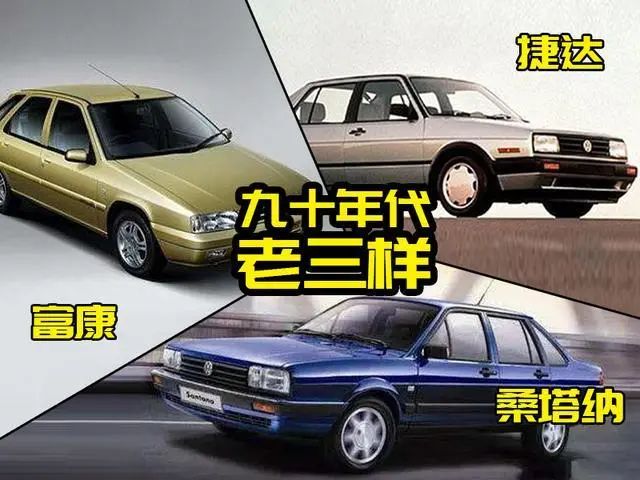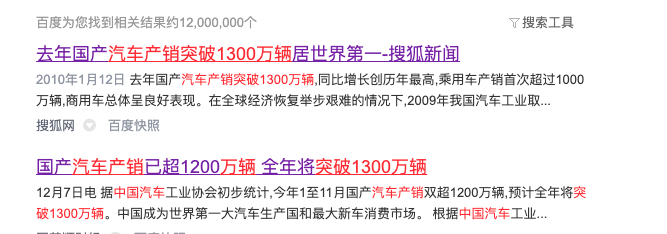Introduction
In recent years, various new forces in car manufacturing have emerged from the Chinese auto industry. From the three electric idiots to the three electric heroes, from traditional car companies to Internet upstarts, cars have changed from traditional four-wheeled two-sofas to intelligent entities that can be connected to the Internet and operate automatically. Today, [Smart Car Technology] will not forget its original intention and review the earth-shaking changes in China's automobile and mobile travel methods.
my country's automobile history can be traced back 65 years ago. On July 13, 1956, the first Jiefang brand car rolled off the production line of the First Automobile Works in Changchun, marking the beginning of China's own automobile industry history.
Today, my country's automobile industry has truly completed its transformation from a poor country to the world's largest automobile production and sales market. After decades of hard work, China's automobile industry has won a place in the international market.
1. Do you know the first car of New China?
In 1956, seven years after the founding of the People's Republic of China, the first domestically produced Jiefang truck rolled off the assembly line. Jiefang trucks opened the first page of the Chinese auto market.
In 1958, China's first car, Dongfeng, was launched. Dongfeng means that the east wind overwhelms the west wind, filling the gap in China's car industry.
In August of the same year, China's first luxury car, Hongqi, was launched. Although Hongqi was a hodgepodge of assembled cars, its price was prohibitive for working people, who could not afford it even if they did not eat or drink for half a year.
In 1983, China's first joint venture car, Santana, took advantage of the country's policy of introducing foreign capital and embarked on its legendary journey.

After 1985, Peugeot, Jetta and Santana became popular in China. Even if you have never driven one, you must have sat in one.
2. A pioneer in car manufacturing, a hero emerges from the grassroots
After the 1990s, China's automobile manufacturing level and technical capabilities have been greatly improved due to joint ventures with foreign automakers, but core technologies such as engines are still monopolized by foreign capital. At this time, China's earliest batch of car pioneers emerged, and they paved a way for China to become the world's largest automobile market.
In 1996, Li Shufu founded Geely Group, becoming the first private car manufacturer in China. Surprisingly, Geely's first car was hammered out by sheet metal workers.
In 1996, Yin Tongyue also quietly founded Chery Automobile. Why do we say it was quietly founded? Because Yin Tongyue first explored the research and development of automobile engines. It was not until 1999 that Chery explored its first engine. At the end of the same year, Chery's first car officially rolled off the assembly line. Then it began its rapid development of car manufacturing. It took only eight years from the first car to the one millionth car.
There is another person who must be mentioned, Wang Chuanfu. In 2003, Wang Chuanfu, who made batteries the best in the industry, also started making cars and founded BYD Auto. In 2005, the F3 model was launched, and BYD F3 also created another sales legend in the Chinese car market. BYD also continuously invested the profits of fuel vehicles into the electric vehicle research and development center, becoming a pioneer of electric vehicles in China.

Data shows that in 2019, China's automobile production and sales exceeded 13 million units, of which Chinese independent brands accounted for half. With the development of science and technology and social progress, China's policies have also begun to encourage new energy vehicles.
3. From electrification to intelligent networking, Internet upstarts are entering the market
Since 2014, the establishment of Ideal, NIO, and Xpeng has ushered in a second wave of entrepreneurial enthusiasm for electric vehicles in China. In 2020, the world faced a major impact from the epidemic, but the electric vehicle industry delivered a good answer. Domestic policies support new energy vehicles and increase fiscal spending, which has brought the three electric car companies Ideal, NIO, and Xpeng back to life in 2019, transforming them into the three electric car giants, successfully listing, and making rapid progress.
In 2021, Internet upstarts have begun to build cars, and the world war in the automotive industry is imminent. From Baidu, Huawei, Didi, Xiaomi, to OPPO, 360 and others, a large number of Internet technology cars have recently entered the new energy and intelligent connected car fields, and have begun to cross-border car manufacturing. Before that, Internet technology companies such as Tencent, Alibaba, and Meituan also made early layouts through capital. As time goes by, more and more Internet technology companies have begun to personally participate, which undoubtedly opens up a new situation.
The traditional car manufacturing industry has always been asset-heavy, with huge initial investments from product research and development, manufacturing to mass production and sales. For Internet technology companies, this is contrary to their light-asset development philosophy. So why do they keep investing in it? On the one hand, after these companies grow to a certain stage, they need to continue to grow and develop; on the other hand, after several years of hard work, new car-making forces have gradually blossomed and borne fruit, and the threshold for new energy car manufacturing has been lowered, providing a reference path for Internet technology companies to enter the car market. At the same time, in the process of the automobile market's transformation to new energy vehicles, intelligence, as an important part of it, is precisely the advantage of Internet technology companies.
4. Last words
Zhang Liang, Chief Digital Officer of SAIC, once said, "Since the beginning of localization, especially in the field of smart cars, China's automobile industry has been a pioneer in the global field." In the future, as consumers, we also have reason to believe that the layout of new car-making forces and Internet upstarts can bring a catfish effect to China's automobile industry. From the combination of software and hardware to the establishment of an ecological environment, new technology companies are expected to replicate their successful experience in the previous industry in the automobile market.
If the development of China's automobile industry over the past decade can be compared to its first steps, then today the integration and empowerment of automobiles and the Internet are already galloping forward. The era of autonomous driving is no longer a distant future.
Ref:[1] Company Tantan. Video: A Century of Chinese Automobiles 1&2.[2] Xiaolin said. Video: The Electric Car War of the Century.[3] Microcomputer. The car market is surging, let’s talk about Internet technology companies entering the car manufacturing industry
Previous article:Tianma Senior Director Liu Jinquan: Seven major trends in the future of in-vehicle displays
Next article:Hongjing Intelligent Driving Beijing R&D Center was officially established in Wangjing Science Park
- Popular Resources
- Popular amplifiers
- "Cross-chip" quantum entanglement helps build more powerful quantum computing capabilities
- Why is the vehicle operating system (Vehicle OS) becoming more and more important?
- Car Sensors - A detailed explanation of LiDAR
- Simple differences between automotive (ultrasonic, millimeter wave, laser) radars
- Comprehensive knowledge about automobile circuits
- Introduction of domestic automotive-grade bipolar latch Hall chip CHA44X
- Infineon Technologies and Magneti Marelli to Drive Regional Control Unit Innovation with AURIX™ TC4x MCU Family
- Power of E-band millimeter-wave radar
- Hardware design of power supply system for automobile controller
 Professor at Beihang University, dedicated to promoting microcontrollers and embedded systems for over 20 years.
Professor at Beihang University, dedicated to promoting microcontrollers and embedded systems for over 20 years.
- Intel promotes AI with multi-dimensional efforts in technology, application, and ecology
- ChinaJoy Qualcomm Snapdragon Theme Pavilion takes you to experience the new changes in digital entertainment in the 5G era
- Infineon's latest generation IGBT technology platform enables precise control of speed and position
- Two test methods for LED lighting life
- Don't Let Lightning Induced Surges Scare You
- Application of brushless motor controller ML4425/4426
- Easy identification of LED power supply quality
- World's first integrated photovoltaic solar system completed in Israel
- Sliding window mean filter for avr microcontroller AD conversion
- What does call mean in the detailed explanation of ABB robot programming instructions?
- "Cross-chip" quantum entanglement helps build more powerful quantum computing capabilities
- Ultrasound patch can continuously and noninvasively monitor blood pressure
- Ultrasound patch can continuously and noninvasively monitor blood pressure
- Europe's three largest chip giants re-examine their supply chains
- Europe's three largest chip giants re-examine their supply chains
- Breaking through the intelligent competition, Changan Automobile opens the "God's perspective"
- The world's first fully digital chassis, looking forward to the debut of the U7 PHEV and EV versions
- Design of automotive LIN communication simulator based on Renesas MCU
- When will solid-state batteries become popular?
- Adding solid-state batteries, CATL wants to continue to be the "King of Ning"
- RTL8019AS ISA 10M network card circuit diagram (pdf, protel99, orcad format)
- How to learn C language in depth
- High efficiency Doherty amplifier
- What kind of accomplishment should an embedded hardware engineer have? I want to change jobs
- #TItraininglearningwithcourtesy#Master this little trick? Make your learning more efficient and easier!
- Please advise, how to calculate the switching frequency of MOS tube?
- Ideas for checking and judging PLC faults during PLC maintenance
- DRA7xx Evaluation Module
- ADC12 module of MSP430 microcontroller
- The tutorial video does not play. Introducing the Value Line series

 82036022X
82036022X











 京公网安备 11010802033920号
京公网安备 11010802033920号